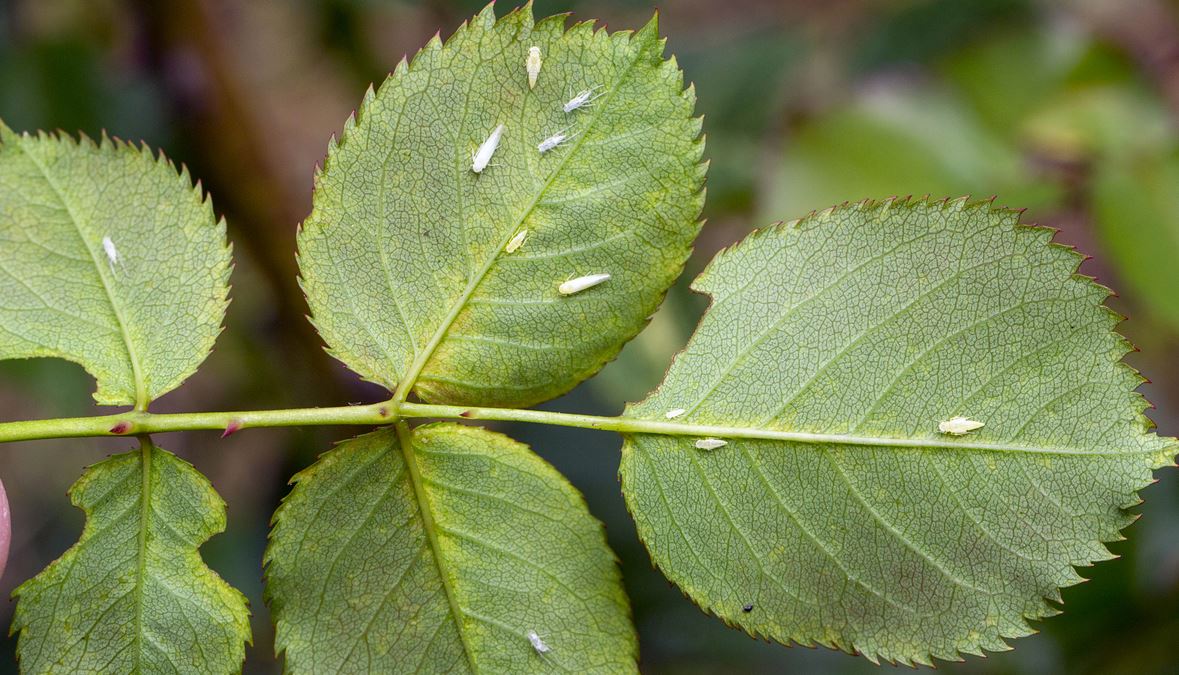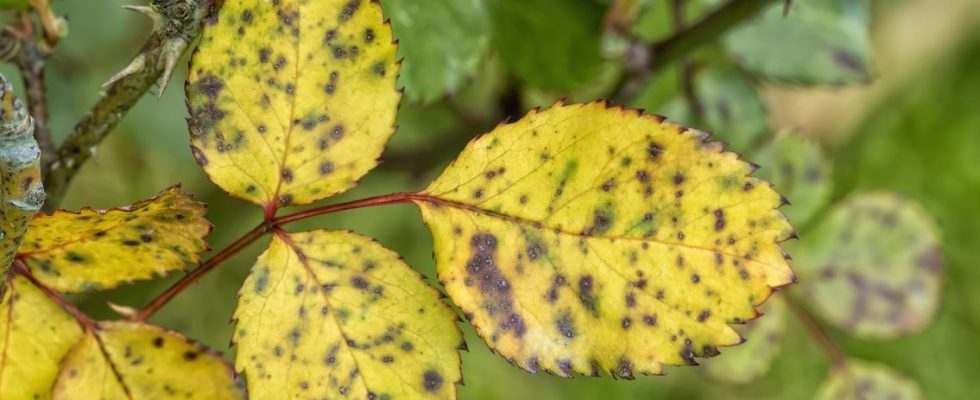1. An exposure problem
Cause
The rosebush has need sufficient sunlight to be in good health. Either because it is installed in a shady location, or because it is too dense, your rosebush may not receive enough light, which is the cause of the yellowing of its leaves.
Example: In the case of a rose bush that is too thick at the top, this yellowing can occur in the leaves at the base of your plant.
Solutions
Do what is necessary to ensure that your rose bush, in its entirety, sufficient brightness. For example, take the trouble to prune it in winter to give it a more harmonious shape, but also to better let the light pass through to its heart, so that all its leaves can benefit from it.
If you have several roses in beds, be sure to ventilate them well and to cut the branches on each of them that go inwards so that they do not block the passage of light.
2. Heat stress
Cause
Global warming leads to very high temperatures during certain times of the year. This can lead to heat stress in many plants, including roses. You then notice that the leaves turn yellow more and more and eventually fall.
Solution
Of course, you can’t do anything about temperature fluctuations, but to limit the problem, you can install a mulch at the foot of your rosebush in order to maintain a certain humidity and to protect it from temperature variations. Be sure to choose a light colored mulch to prevent it from heating up.
3. Watering problem
Causes
As with all plants, improper watering of your rosebush can lead to yellowing of its leaves. May your rosebush be too watered or not enoughits discomfort manifests itself in the same way: the discoloration of its leaves followed by their fall.
These symptoms may also appear if you water your plant directly on the foliage. Indeed, the sun’s rays will then reflect on the leaves and cause burns. The problem can also come from your soil : if it is not drained enough, the water can stagnate and lead to the rotting of the roots of your rosebush.
Solutions
Roses do indeed need a lot of water, about 10 liters per week, but the waterings must be spaced out in order to avoid drowning the roots and causing their rotting. The best watering technique is to pour water at the base of your rosebush rather than on the foliage.
Sprinkler systems should be avoided because, beyond the problem of leaf scorch mentioned above, they can promote the development of powdery mildew, a fungus that appears on wet leaves.
4. Rose chlorosis
Cause
One of the major problems that the rose bush suffers from is rose chlorosis. This disease is usually caused by heavy or calcareous and/or too poor soil. The consequence is that the rosebush is unable to draw the iron it needs to develop optimally.
You can then notice a yellowing of the leaves, except at the level of the veins which remain green. Not only does your rosebush lose all its beauty, but it can become stunted, or even die, because its development is slowed down due topoor photosynthesis.
Solutions
In this case, the treatment is quite simple to set up since it suffices to replenish the soil with iron. It can be by incorporating a good quality compost to the soil of your rose bush or by burying horse manure in the ground at the foot of it. You can also find anti-chlorosis treatments on the market that will allow your rosebush to benefit from the iron supply it needs.
5. Leafhoppers

Cause
These insects are similar to crickets and grasshoppers. Small in size, they do not exceed 3 mm and settle on the underside of the leaves of your rosebush. Once properly installed, they suck sap for food.
By losing its sap, your rose also loses its source of chlorophyll. This deficiency results in small yellow spots which progress on the foliage and damage it until it turns completely yellow.
Solutions
To control leafhoppers, you can spray a mixture of water and black soap. It is also possible to use a solution of kaolinite, neem or pyrethrum oil.
6. Red Spiders
Cause
If your rose bush’s leaves turn yellow, dry out, and curl up before eventually dropping, it may be infested with spider mites. Another sign that may make you think of these little mites, cis the presence of black spots on the leaves.
Only a millimeter long, spider mites are not always easily visible to the naked eye. On the other hand, you can more easily identify their small thin canvases between the branches of your rosebush. Red spider mites usually settle on the back of the foliage to suck the sap. They thrive in a dry environment and are common in gardens, especially when the temperature rises.
Solutions
Red spider mites hate humidity, to prevent their appearance or to stop the beginning of an infestation, it is possible to spray water on the foliage of your rosebush. Carry out this spraying rather at the end of the day to avoid the harmful effects of the sun on wet leaves, as seen above.
In addition, the water will evaporate less quickly and will have more time to act on the spider mites. In case of more massive infestation, you can spray directly on your rosebush a natural solution that you will have previously prepared. by diluting black soap in water. There are also solutions sold in garden centres.

